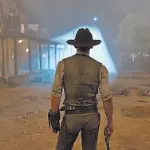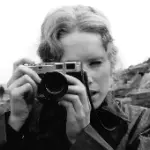
What is real and what is fiction in Oppenheimer? The 5 biggest lies of the movie
Everyone knows that films "based on true stories" make many adjustments to the historical facts they portray, either to make them more dramatic or to fit them into two (or, in this case, three...) hours. It's no different with Oppenheimer, Christopher Nolan's new epic about the scientist who created the atomic bomb, J. Robert Oppenheimer (Cillian Murphy).
Check out 5 historical inaccuracies from the feature film below.
LOS ALAMOS WAS NOT "VIRTUALLY UNINHABITED" BEFORE THE MANHATTAN PROJECT

Perhaps Oppenheimer's most notable omission is when the cinematic version of the scientist tries to convince the heads of the American army to choose Los Alamos (New Mexico) to build his secret laboratory, he mentions that the region's only connections to civilization are "a school for boys and the fact that Native Americans come here to bury their dead." That's not true.
As early as the late 1930s and early 1940s, Los Alamos was home to a considerable community of Hispanic immigrants who made a living from agriculture. Many of them were displaced for the construction of the "mini-city" of the Manhattan Project, and hundreds of others were kept in the dark about the nature of the tests conducted on the site - as a result, these families have been living with cancer and other complications caused by radiation for generations, without any support or official recognition from the US government.
DAVID HILL WAS NOT THE KEY WITNESS AGAINST STRAUSS

In the spirit of condensing a much longer bureaucratic procedure, Christopher Nolan chose to place the entire responsibility of representing the scientific community in Lewis Strauss's (Robert Downey Jr.) confirmation hearing on Dr. David Hill (Rami Malek), eventually leading the government to block his appointment as part of the presidential cabinet.
In reality, although Hill did attend and express that "most scientists would prefer Strauss to stay entirely out of public administration," it was not his testimony that impressed the Washington politicians the most. Another scientist involved in the Manhattan Project was there: David Inglis, who later became the head of the Federation of American Scientists after World War II, testified about Strauss's "personal vendetta" against Oppenheimer.
Furthermore, the antagonistic enmity between Strauss and Senator Clinton Anderson from New Mexico was also key in preventing him from assuming a government position.
KLAUS FUCHS WAS NOT THE ONLY SOVIET SPY AT LOS ALAMOS

The scientist portrayed by Christopher Denham, who passed through the laboratories of the Manhattan Project as a representative of the British government, is accused in the movie of leaking American secrets to the Soviets - who, although they were allies of the US during World War II, were kept in the dark about the development of the atomic bomb. The truth is that Dr. Fuchs was far from being the only scientist to bridge this clandestine gap between the two countries.
Two technicians, named Ted Hall and David Greenglass, provided details of the laboratory tests to the Soviet Union. Engineer Oscar Seborer did the same, and historians believe that the information provided by him was probably the most important among all the spies. None of the three identified as communists, but they were all concerned about the American monopoly over nuclear weapons.
OPPENHEIMER DID NOT COME CLOSE TO KILLING NIELS BOHR

Yes, it is true that young Oppie injected some kind of toxic substance into his tutor's apple at Cambridge, physicist Patrick Blackett. We are not sure if the substance was cyanide, as seen in the film - most historians believe that Oppenheimer used a milder "poison," which would only make Blackett ill, as the scientist wasn't even expelled from Cambridge when the incident was discovered.
In Oppenheimer, however, the poisoning incident culminates with Niels Bohr (Kenneth Branagh) almost eating the apple intended for Blackett. This didn't happen: in fact, Oppenheimer and Bohr's paths wouldn't cross until several years later when the scientists were introduced by their mutual friend, Ernest Rutherford.
OPPENHEIMER DID NOT CONSULT EINSTEIN ABOUT THE ATOMIC BOMB

Christopher Nolan's film makes the sporadic encounters between Oppenheimer and Albert Einstein (Tom Conti) a central part of the physicist's story. While it is true that the two knew each other, and reluctant respect dictated their relationship, it is unlikely that Oppenheimer consulted Einstein about the details of the Manhattan Project - there are no records of the specific interactions between the two as shown in the movie.
And one thing is certain: Oppenheimer certainly didn't go to his colleague to seek advice on Robert Teller's (Benny Safdie) calculations, which indicated that detonating an atomic bomb could cause a chain reaction that would destroy the entire planet. Instead, he went to Arthur Compton, who checked the calculations alongside Hans Bethe and determined that there was a "near zero" chance of the catastrophic event happening.














































Share your thoughts!
Be the first to start the conversation.